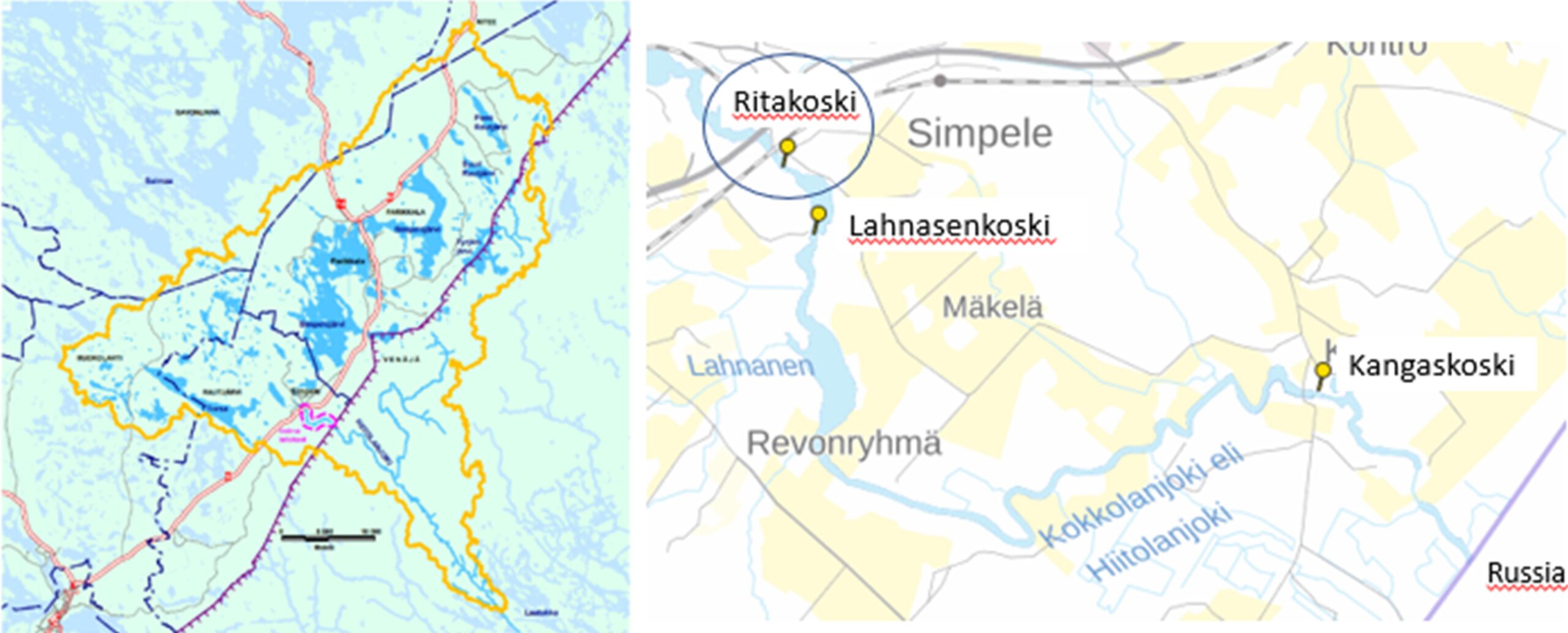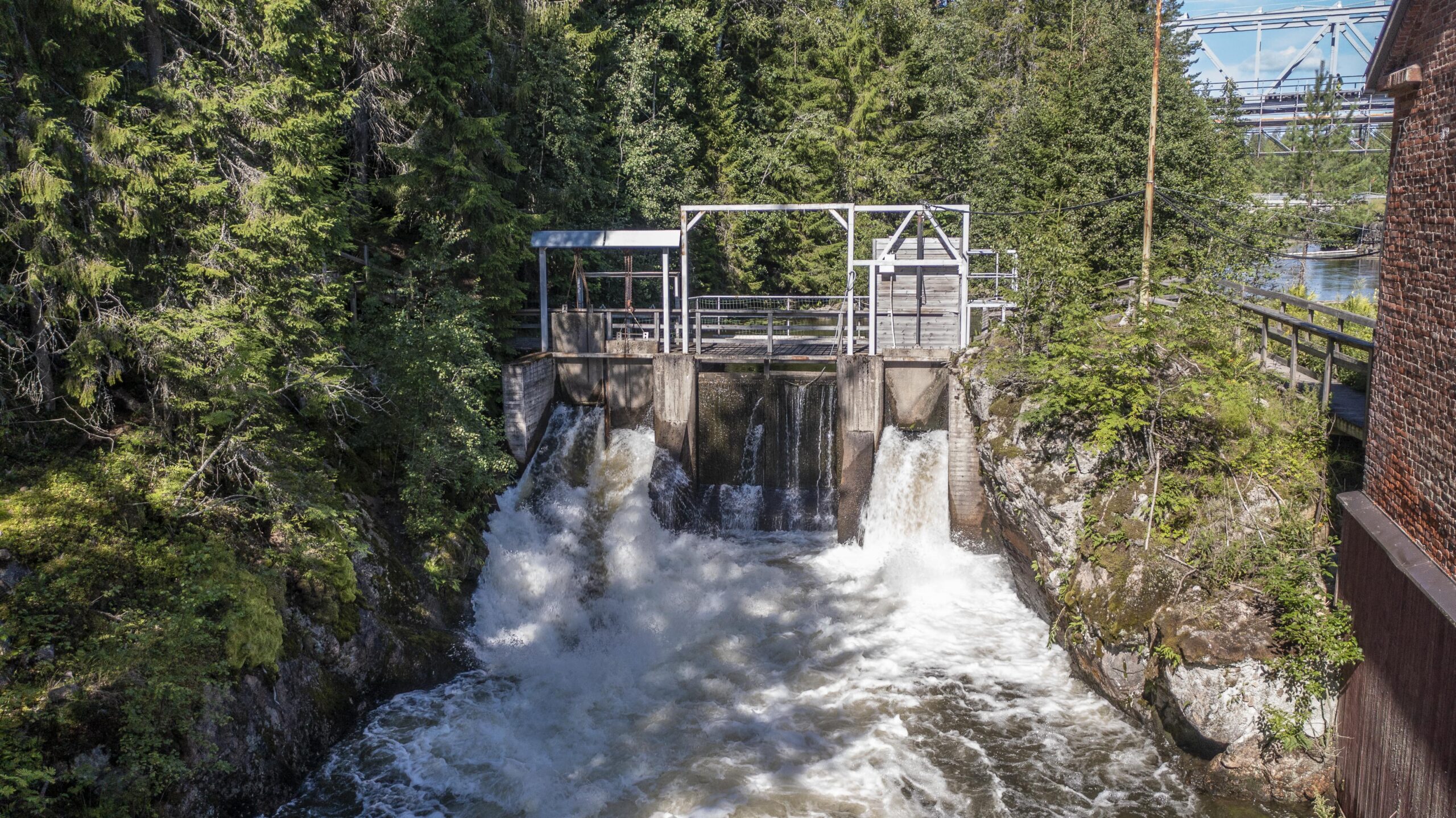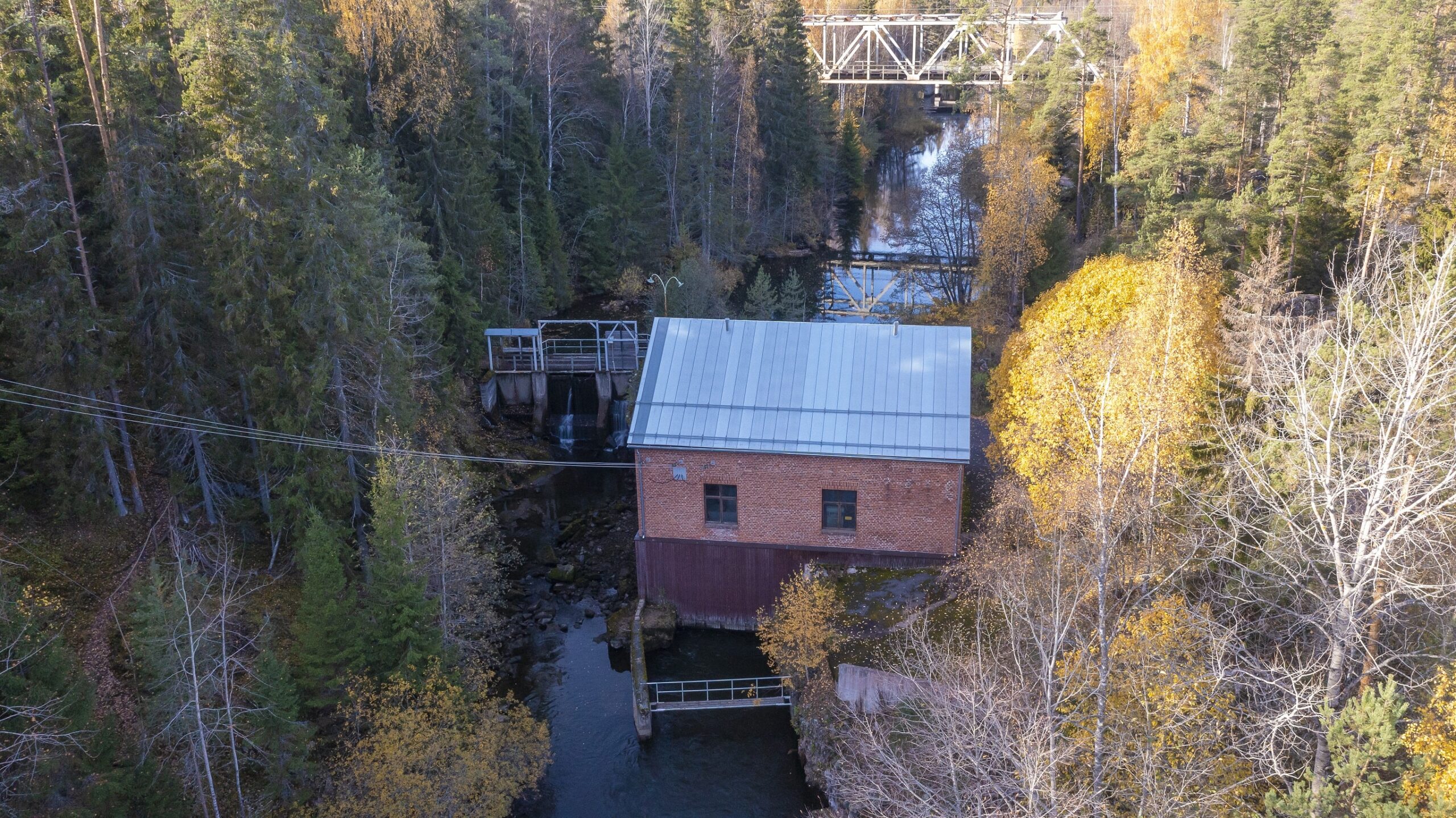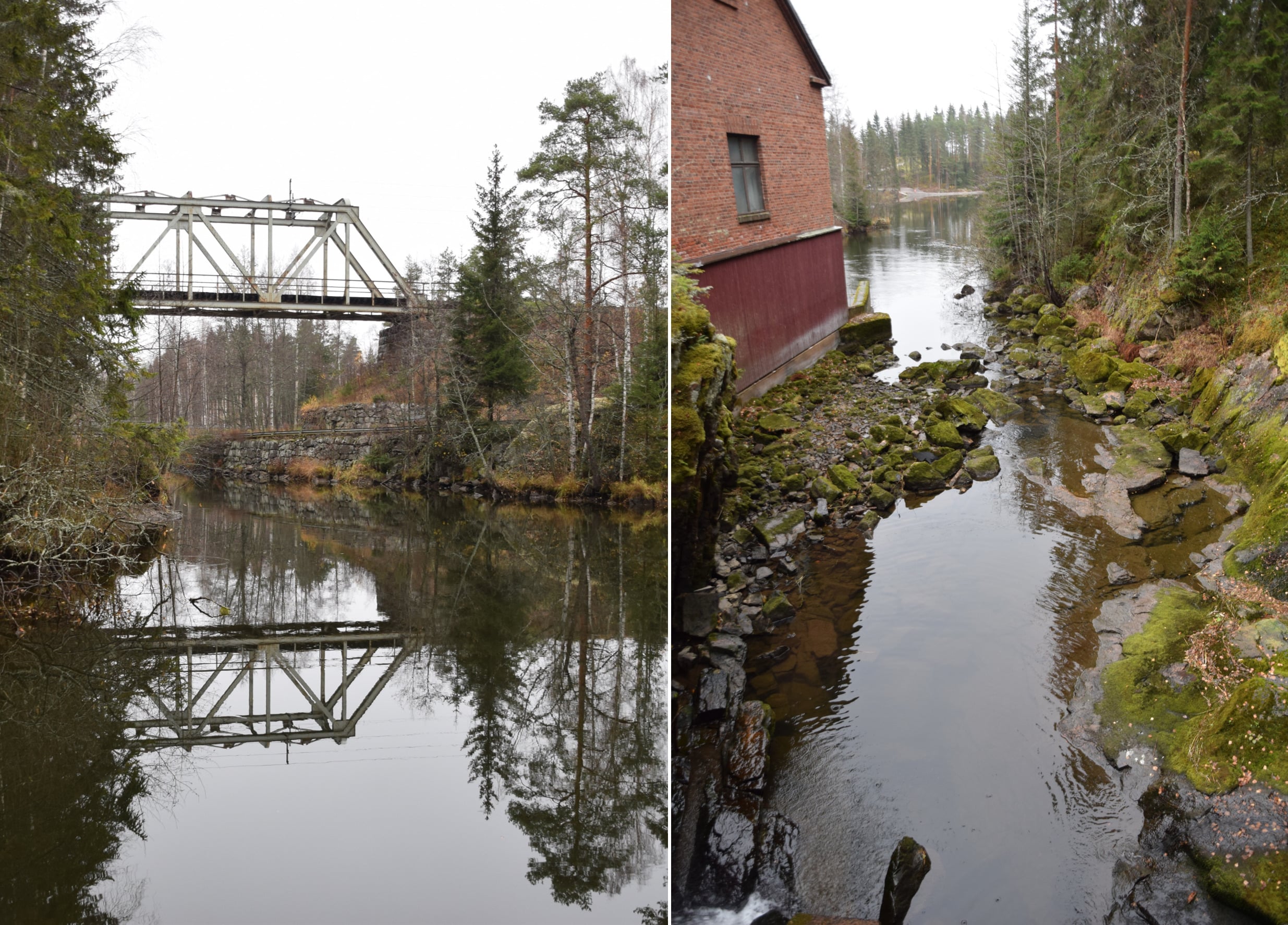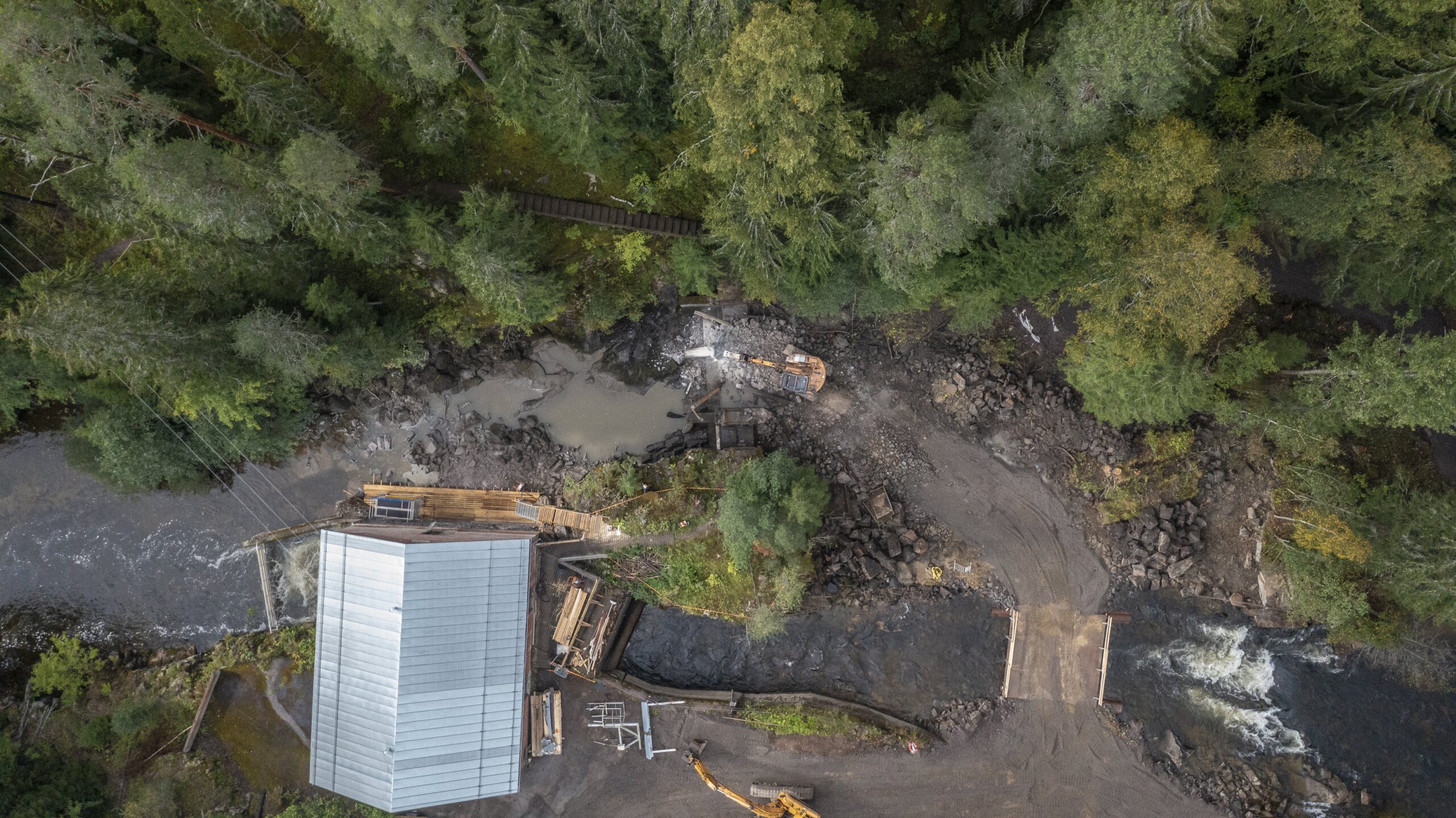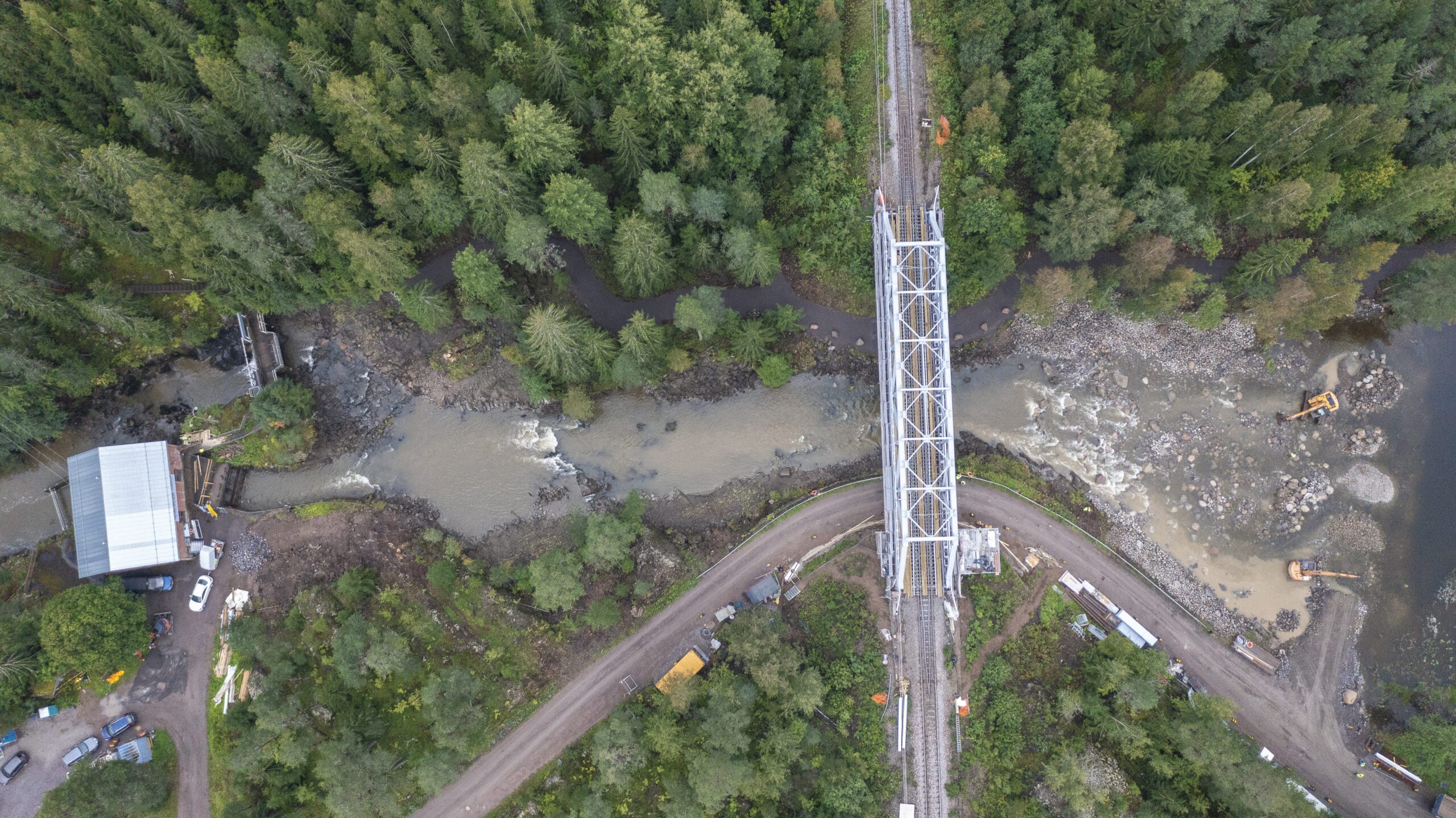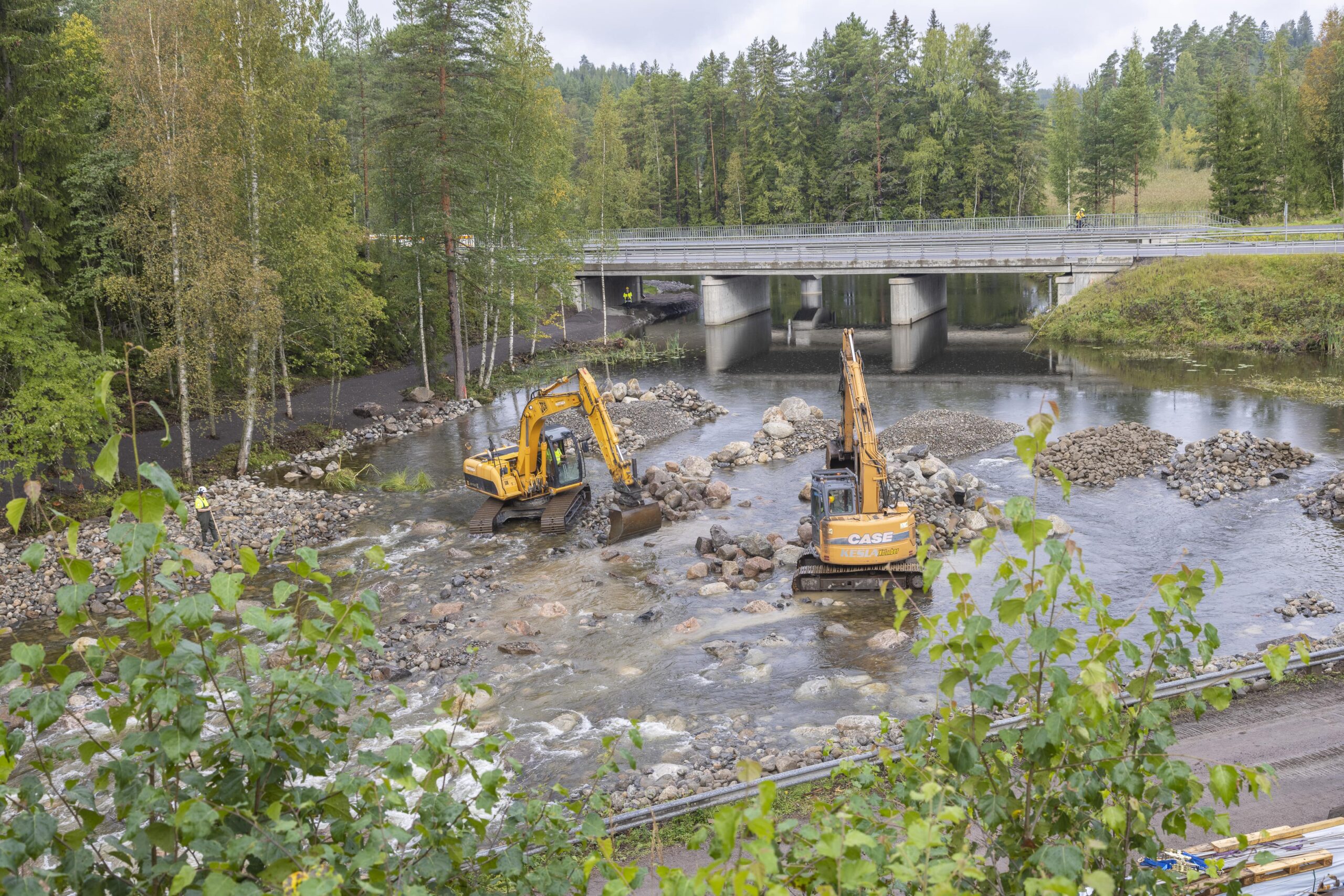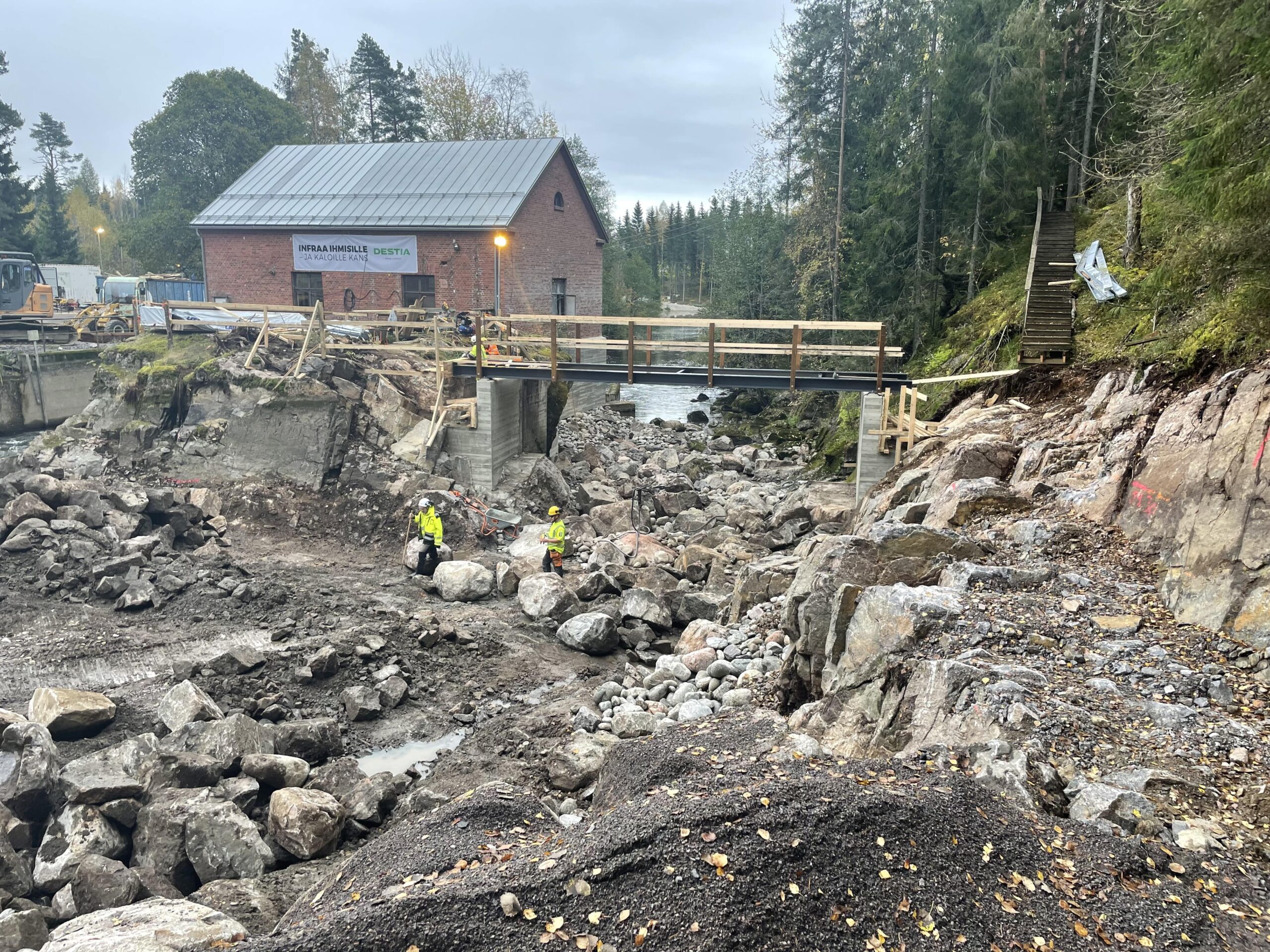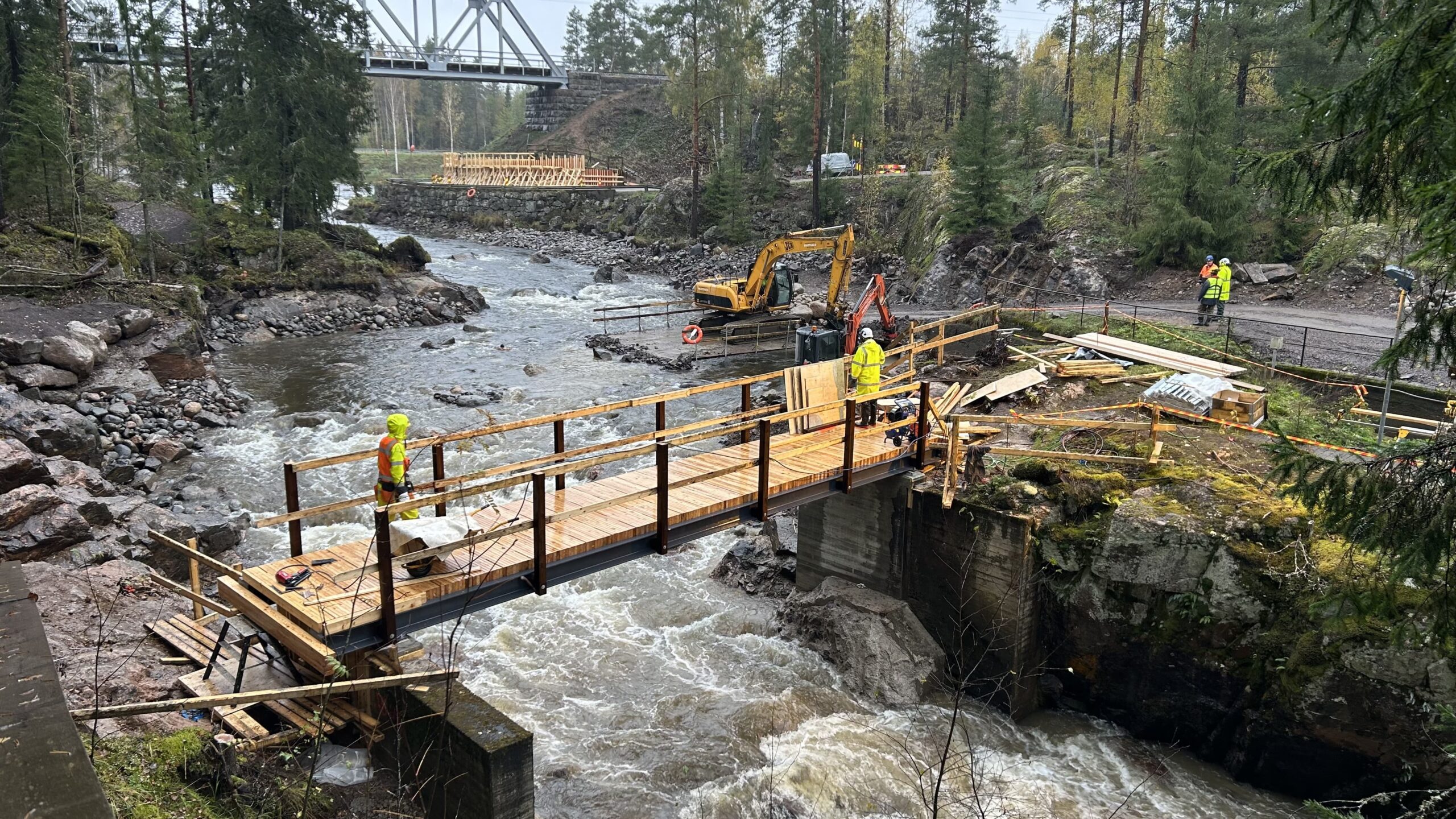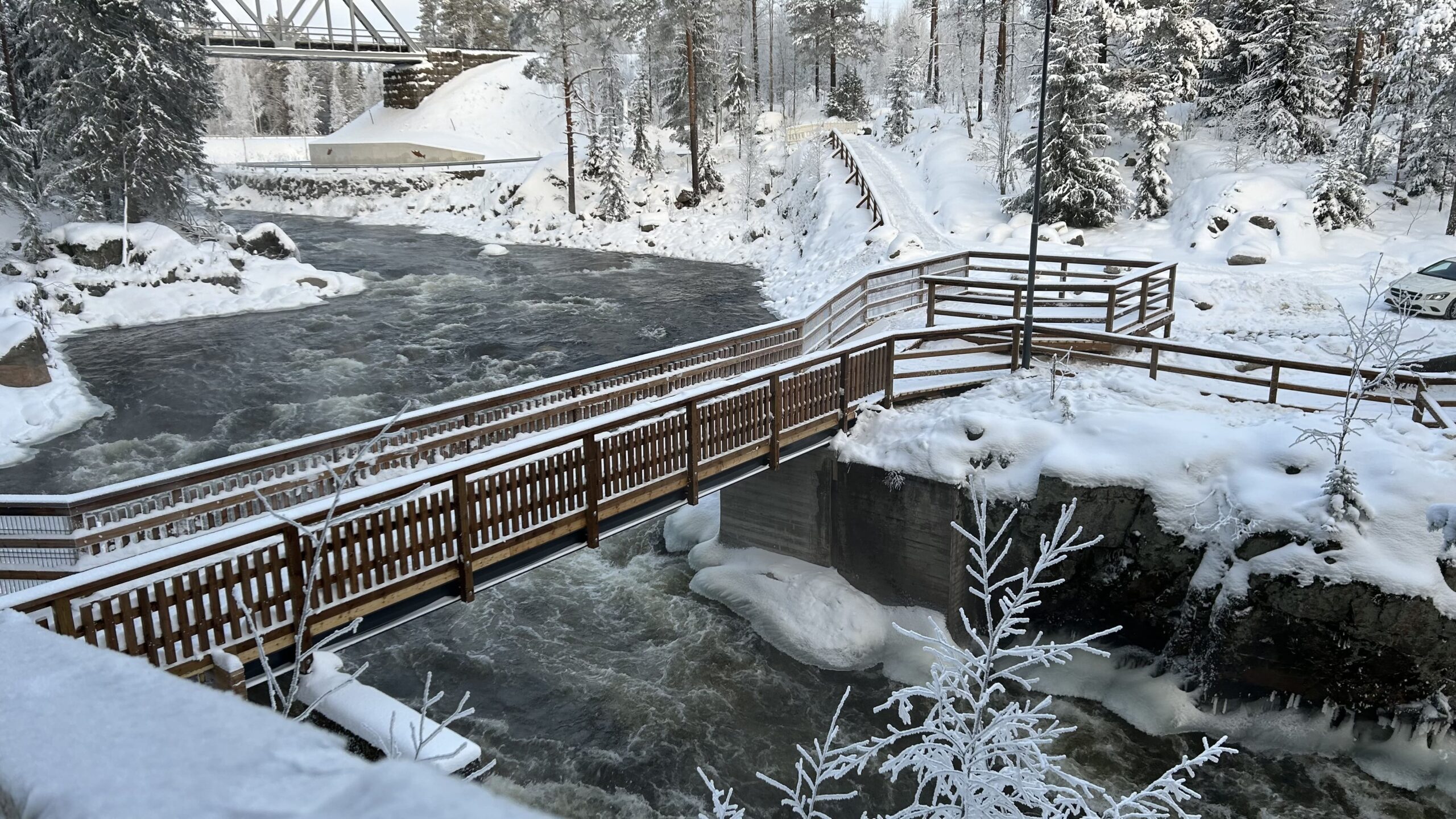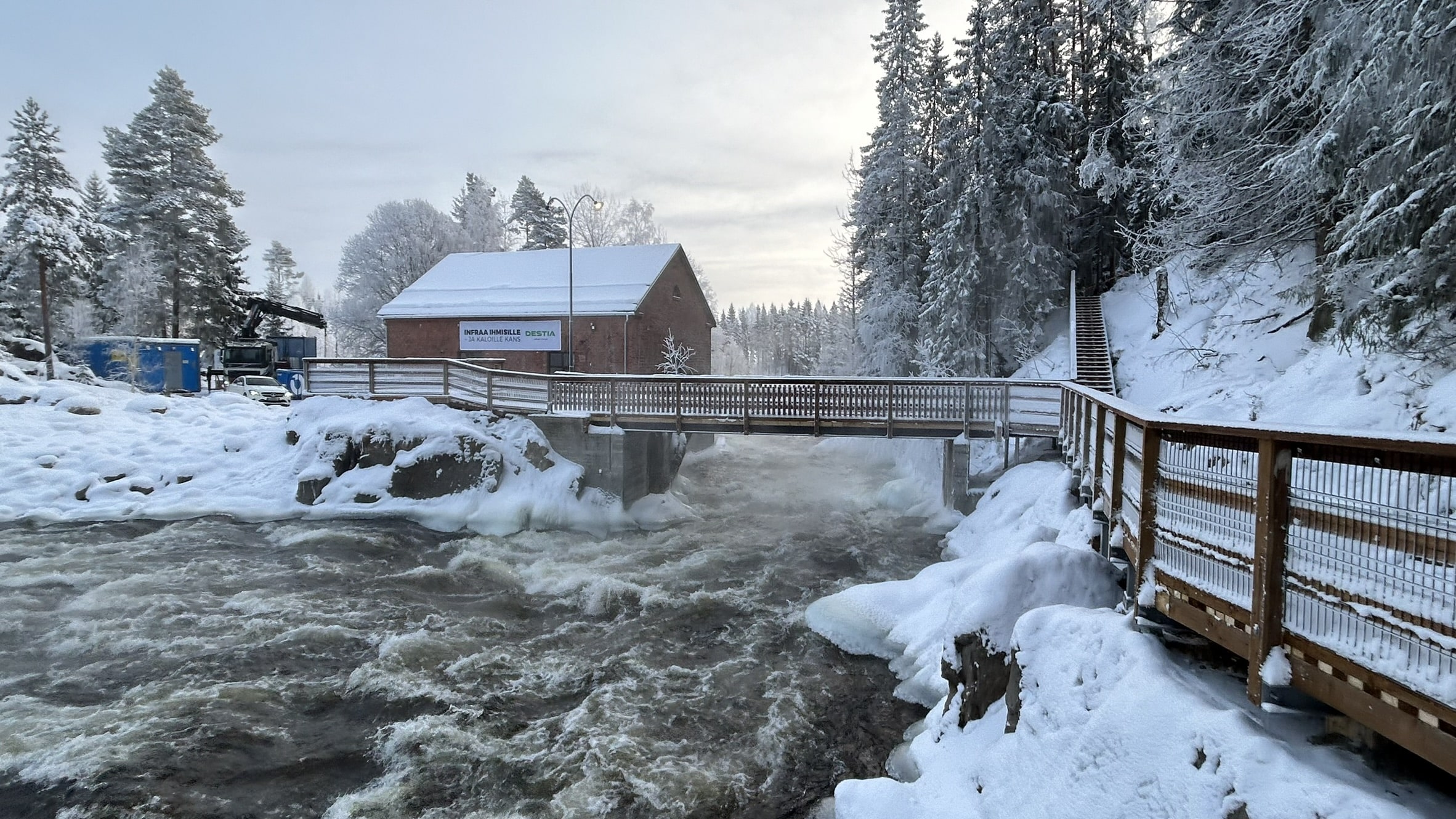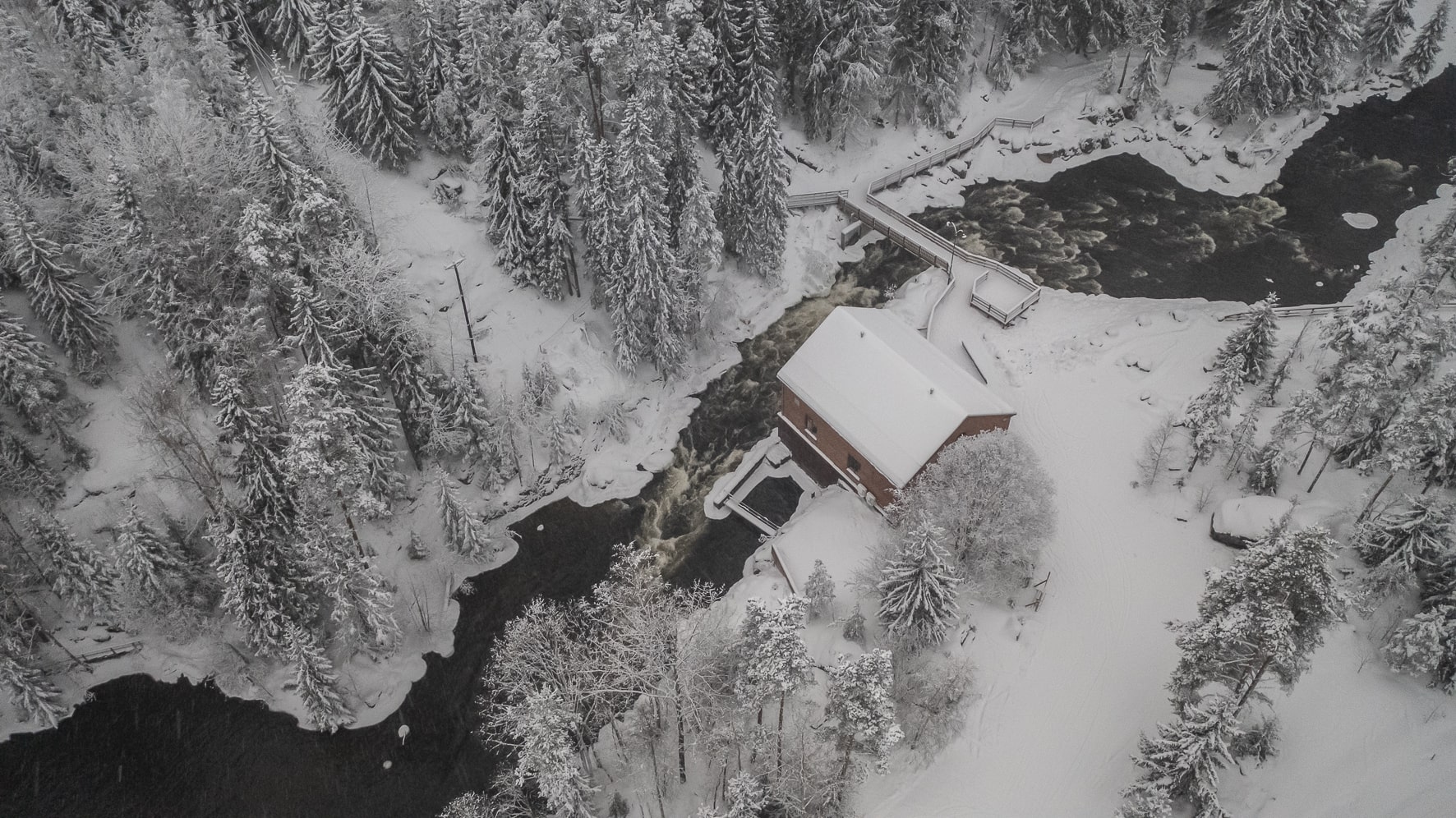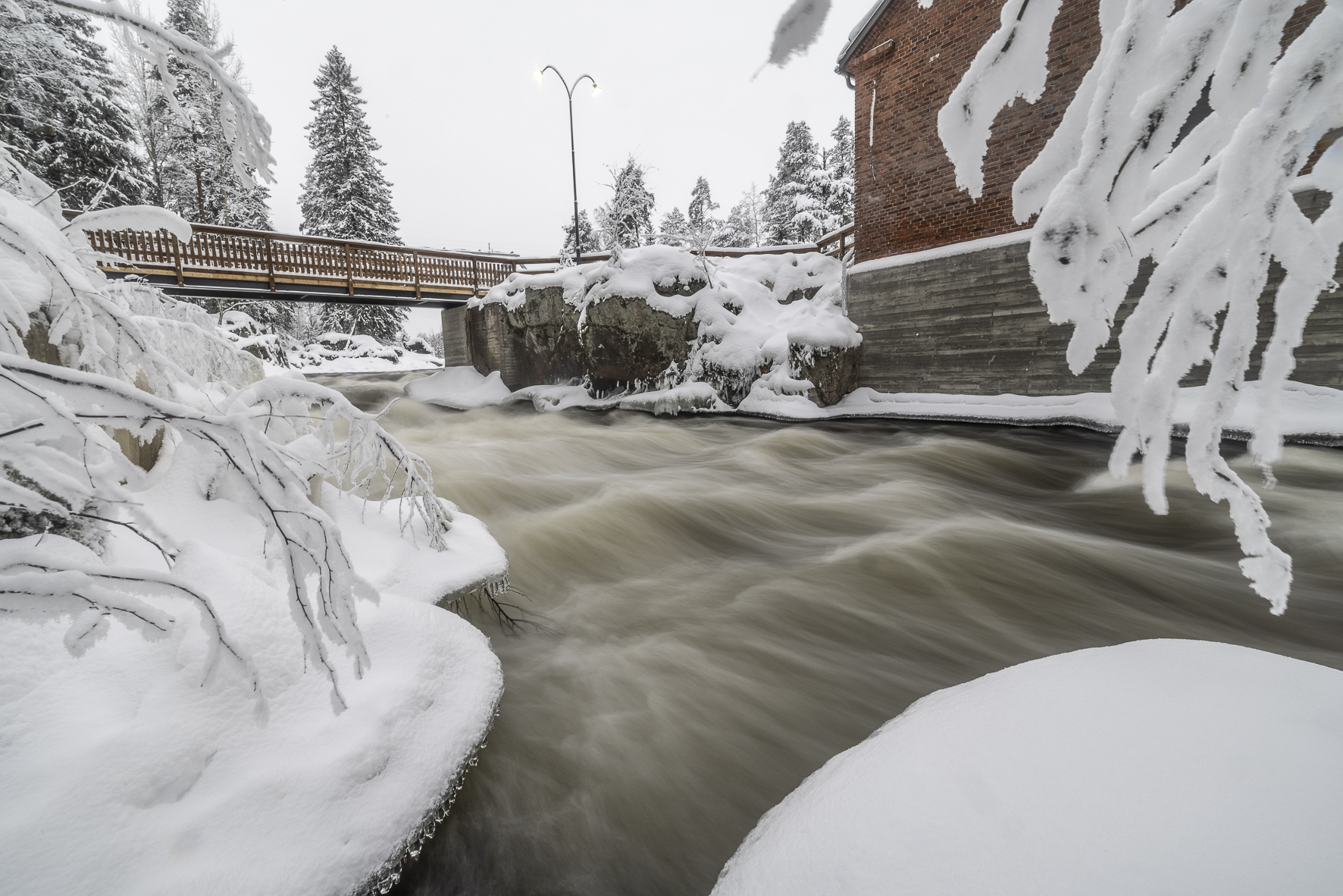A free-flowing River Hiitolanjoki at last
The River Hiitolanjoki
Hiitolanjoki is a 53-km-long transborder river that runs for 8 km in South-eastern Finland before entering Russia to flow into Lake Ladoga. Its catchment area is approximately 1470 km2 and on the Finnish side it is comprised of two river routes, with several lakes and tributaries (Figure 1). River Hiitolanjoki is of high ecological importance, since it inhabits the last remaining stock of the naturally landlocked salmon in Finland. However, its corridor has been dammed for over 100 years and access to upstream fish spawning grounds had been blocked. On the Finnish side of the border, three hydropower dams had been fragmenting River Hiitolanjoki, the Kangaskoski, the Lahnasenkoski and the Ritakoski dams (Figure 1).


